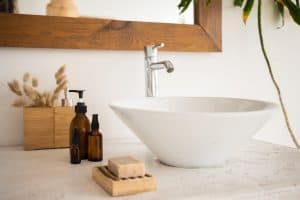The Importance Of Good Air Quality
For the estimated 10 million people in England that suffers from hay fever, pollen is a constant enemy throughout the summer months. Not content with ruining picnics and summer walks, pollen also infiltrates our homes and offices, causing misery indoors too.
Poor indoor air quality can trigger a host of allergies, wreaking havoc on your respiratory system, eyes, and nose. Not only can pollen, mould and dust adversely affect indoor air quality and cause allergic reactions, but certain cleaning chemicals and air fresheners contain pollutants such as VOCs, and other more serious pollutants such as carbon monoxide and asbestos can cause life threatening health implications.
5 Ways To Improve Indoor Air Quality At Your Office
Plants, nature’s air filters
Did you know that some houseplants have been shown to purify the air of toxins or even reduce dust by as much as 20%? Research has also shown some common household plants are effective at removing harmful contaminants from the air, such as formaldehyde, benzene and ammonia, and can help reduce the effects of sick building syndrome.
Indoor plants can be a simple and inexpensive way to maintain a healthy and attractive home or office.
Total Vacuuming
This involves looking beyond just the floor when vacuum cleaning. Whilst carpets do need to be regularly and thoroughly vacuum cleaned, take a 360 degree approach to cleaning. Dust and allergens can accumulate on a variety of surfaces, many of which are ignored in most office cleaning regimes.
Fabric-covered cubicle walls are common in offices and can house all sorts of allergens. Dust also accumulates on light fixtures and air vents. Vertical surface vacuuming will resolve this issue and can be achieved with the right hoses and attachments, and could prove beneficial for those with allergies.
For those who really suffer, you may wish to invest in a HEPA filtration vacuum cleaner, which is capable of removing even the smallest of particles from the environment.
Purify the air
Air purifiers are portable machines that help to further remove contaminants, odours and more from indoor air. Air is passed through a filter or filters via a fan, then the purified air is pushed back into the room. Purifiers come in an assortment of shapes and sizes, depending on your room size or need — from personal purifiers you can wear, to small desktop models, to large-box shaped machines, and even systems for your entire house. Be prepared to spend some money and time, as most models require frequent filter changing or cleaning, but judging from online reviews, most allergy sufferers find it’s worth it.
HEPA filters
HEPA stands for high-efficiency particulate air and is a type of air filter that can capture particles as small as .3 microns from the air. When attached to vacuum cleaners or air purifiers, they can be highly effective at filtering unwanted particles from the air. Don’t forget to change or clean your filters at regular intervals or they will become ineffective.
Use Microfibre cloths
Back in the day, feather dusters were a popular cleaning tool. They may have been effective at sweeping dust, but they don’t pick the dust up. Using a feather duster or dry rag is worse than not dusting at all since all they do is send dust particles into the air to settle back on surfaces.
Microfiber cloths are able to attach themselves to even the smallest dirt particles, effectively removing them from the surface. Just don’t forget to clean your microfibre cloths regularly.
CCS: Cleaning & well-being experts for Bath, Bristol and the SW.
To learn more about preventing allergies, or any of our other contract cleaning services, contact our customer service team for more information on 0800 4488026.






